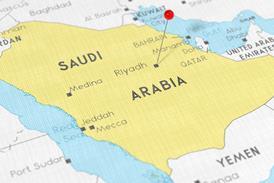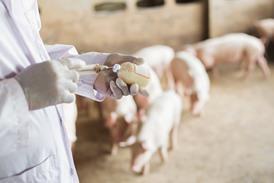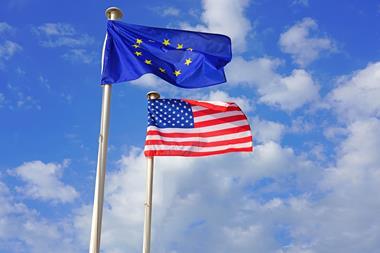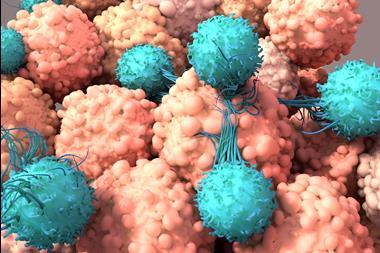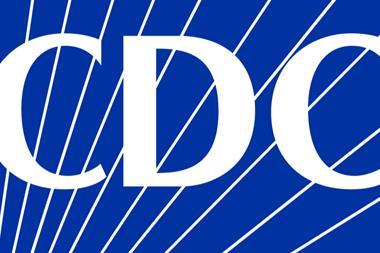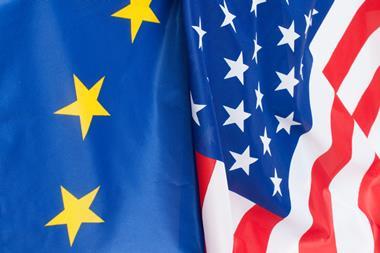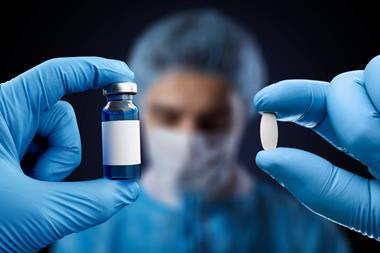To support its mission of protecting and advancing public health, the US FDA has established formal mechanisms to engage with sponsors and applicants. Meetings with the Agency are a critical component of the review and approval process for prescription drugs, biologics and medical devices. Meaningful, timely and formal FDA advice helps to de-risk and accelerate a product’s development, review and approval process. This continuing professional development supplement discusses the available meeting options for products regulated by CDER and CBER, which should help the reader select the appropriate avenue to receive the Agency’s advice and develop a viable regulatory interactions strategy
When thinking about drug development and bringing new medicines to patients, the focus is appropriately on whether the product is safe, efficacious and meets the requisite quality standards. While a product approval is determined by the strength and adequacy of its scientific data, the way that sponsors and applicants interact with the US Food and Drug Administration (FDA) is also of utmost importance. A sponsor’s ability to effectively present data and reach consensus on critical issues can substantially increase the chances for timely approval and diminish costly delays or rejections. The challenge is compounded for companies that simultaneously engage in multiple geographies and attempt to gain alignment across regulatory agencies.
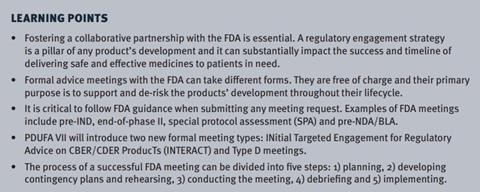
Building successful relationships with regulators takes preparation and commitment. Collaboration, critical thinking and clear communication are all necessary to bring a product to market, however, these factors are often devalued. Strategic Agency interactions position sponsors for optimal success and prepare them to deal with potential regulatory issues or risks that may have adverse impact on drug development. An effective regulatory interaction strategy aims to ensure that all engagements are reasonable, transparent and well-organised; they utilise regulatory guidance, best practices and standardised processes to define how each interaction will be handled across various stages of drug development.
When considering engaging with the FDA, formal meetings are most common at the forefront of a team’s engagement strategy. This CPD article provides an overview of the meeting options for sponsors and applicants of products regulated by the Center for Drugs Evaluation and Research (CDER) and the Center for Biologics Evaluation and Research (CBER).
| Meeting type | Description | Examples | FDA response | Package due | Meeting held |
|---|---|---|---|---|---|
| Type A | These meetings are intended to progress stalled product development (ie, emergency meetings). Review division should be contacted prior to the request to discuss appropriateness of the meeting type. | Meetings to discuss: Dispute resolution Clinical holds Complete response letters Refusal to file letters | Day 14 | At the time of the request | Day 30 |
| Type B | These are considered milestone meetings and are usually only granted one per milestone. |
Pre-IND Pre-NDA/BLA |
Day 21 | Day 30 | Day 60 |
| Type B (EOP) | These are considered milestone meetings at the end of a development phase and are usually only granted one per milestone. |
End-of-Phase I (EOP I) End-of-Phase II (EOP II) |
Day 14 | Day 30 | Day 70 |
| Type C | This is any meeting other than a Type A, B, B (EOP), D, or INTERACT regarding the development and review of a product. | Catch-All meetings; can be face-to-face, teleconference or written responses only. | Day 21 | Day 28 | Day 75 |
| Type D | This meeting allows for quicker discussion on a narrow set of issues (no more than two focused topics). New meeting type being introduced in PDUFA VII (2023). [9] | Follow-up question that raises a new issue after a formal meeting. | Day 14 | At the time of the request | Day 50 |
| INTERACT | The purpose of this meeting is to facilitate INDenabling efforts when a sponsor is experiencing a new, challenging issue that will delay progress. Meeting type with new scope in PDUFA VII (2023) | Design of IND-enabling toxicity studies, or complex manufacturing technologies or processes. | Day 21 | At the time of the request | Day 75 |
Formal meetings
FDA formal advice meetings currently take four different forms (soon to be six), and each is governed by a different procedure and process. Meetings are free-of-charge, and their main purpose is to support the development of medicines throughout their lifecycle, reduce the risks of potential setbacks and decrease delays in delivering safe and effective medicines to patients in need. At these meetings, sponsors and applicants have an opportunity to present proposals, provide answers and resolve scientific and technical issues that arise at various stages during the development of the product. FDA interactions are limited and much time and effort are required for each one. Therefore, it is imperative to navigate the options and process carefully to gain as much value as possible.[2]
The Prescription Drug User Fee Act (PDUFA) VII will introduce two new formal meeting types: INitial Targeted Engagement for Regulatory Advice on CBER/CDER ProducTs (INTERACT) meetings and Type D meetings. The purpose of INTERACT meetings is to facilitate IND-enabling efforts where the sponsor has a novel issue that, in the absence of early FDA input, might delay the progress of IND-enabling studies or initiation of first-inhuman trials. This type of meeting was previously limited to products regulated by CBER, and it will now be extended to those regulated by CDER. Type D meetings will facilitate a discussion between the FDA and a sponsor on one or two defined topics. Due to the narrow focus of the Type D meeting, the overall meeting timelines are more expeditious than those of a Type C or Type B meeting.[3]
While each meeting type is dictated by the specific topic for the meeting and the stage of development, all functions within drug development are typically discussed with the Agency during the development journey, including pre-clinical, chemistry manufacturing and controls (CMC), clinical and regulatory topics. While the FDA does its best to grant as many meetings as possible, it can and will deny inappropriate or incomplete meeting requests. Such requests include out-of-scope discussion topics, requests with required elements that are missing, or if the Agency feels it is too early or too late to hold a particular meeting. Therefore, it is critical to follow FDA guidance when submitting any meeting request.
Examples of the types of FDA meetings include:
- Pre-IND meetings: In these meetings, a sponsor typically presents the product’s manufacturing, characterisation and pre-clinical data. In addition, the initial plan and protocols for first-in-human trials are often the subject of pre-IND meetings. The purpose is to receive FDA feedback on the sponsor’s proposals, agree on critical issues to de-risk the Investigational New Drug (IND) application and avoid a “clinical hold.” In some cases, a sponsor may use a pre-IND meeting to discuss the results of trials conducted outside the US and their positioning within the IND application.
- End-of-Phase II meetings: During these meetings, the sponsor provides evidence of “proof of concept.” Typically, these meetings are used to discuss the design of the Phase III trials and submission strategy. The FDA determines if it is safe to proceed to Phase III by evaluating the protocols and existing trial data to date to assess effectiveness. The FDA should also note if there is any additional information that should be collected to support the marketing application.
- Special Protocol Assessment (SPA) meetings: A SPA is a process in which sponsors meet with the FDA to agree on a study design for an eligible clinical or pre-clinical study. The purpose is to determine whether the proposed investigation adequately addresses scientific and regulatory requirements that could support a marketing application. Further information on SPAs can be found in the FDA’s “Special Protocol Assessment Guidance for Industry”[4]
- Pre-NDA/BLA meetings: A sponsor approaching the submission of their marketing application would typically request a preNDA/BLA meeting to discuss any potential outstanding issues. These meetings often focus on the adequacy of the data to support marketing approval, data format and presentation, the appropriateness of methods for statistical analysis, preliminary discussions of risk management plans, post-marketing studies, inspection considerations, etc. The timing of a pre-NDA/BLA meeting is essential to allow for meaningful responses to FDA feedback. The Agency recommends no less than two months prior to the planned submission of the application. Where applicable, a pre-NDA/BLA meeting includes the discussion of a “Formal Communication Plan.”[5] Such a plan may include elements of the standard approach (eg, a mid-cycle communication or a late-cycle meeting) as well as other interactions that sometimes occur during the review process (eg, an application orientation meeting, which may take place during the filing period). These discussions will be summarised after the meeting and reflected in the FDA meeting minutes. The Formal Communication Plan may be reviewed and amended based on the progress of the review and the mutual agreement of the review team and the applicant. For example, future specified interactions in the program (eg, the late-cycle meeting) may be cancelled if they become unnecessary
- Advisory Committee meetings: FDA Scientific Advisory Committee Meetings (more commonly known as AdComms) are public meetings that assist the Agency in eliciting unbiased expert advice on scientific, technical and policy matters. Contrary to common assumptions, these meetings can occur at any stage of a product’s review process, as well as after a product has been approved and marketed and the FDA makes the decision on whether the product needs an AdComm. Most meetings include a vote by the independent experts involved in whether they believe a medicinal product has an acceptable benefit− risk profile for US marketing approval or whether the FDA should take specific actions in relation to safety[6]
- Parallel Scientific Advice meetings: As drug development continues to move towards a more globalised process, the European Medicines Agency (EMA) and the FDA share the Parallel Scientific Advice (PSA) program. The PSA provides a pathway for scientific experts to synchronously engage with sponsors on key issues during the development phase of drugs, biologics, vaccines and other advanced therapies, as well as clarify the reasoning behind regulatory decisions. While it does not guarantee FDA and EMA alignment, the PSA should allow a sponsor to optimise drug or biologics development and potentially prevent unnecessary (and costly) scientific testing, pre-clinical studies or clinical trials.[7]
Table 1 summarises information detailed in the FDA’s guidance “Formal Meetings Between the FDA and Sponsors or Applicants of PDUFA Products Guidance for Industry” and in the “PDUFA VII Commitment Letter”. It provides an overview of formal meetings between the FDA, sponsors or applicants and their respective timelines.
Each year, most of the FDA’s time and resources are spent reviewing applications and meeting with sponsors to provide drug development advice.[8] Each of these meetings require significant preparation for all parties involved. In 2020, 4558 meetings were requested of FDA (Type A, B, and C combined) and 43.5% of those meeting requests were granted (Table 2). Additionally, the FDA’s response to meeting requests (granted or denied), was generally provided on time (88.8%) and for those that were granted, meetings were mostly scheduled on time (77.3%).
Given the resource constraints of the FDA, it is evident that strategic planning and execution of a drug development engagement plan is imperative for a sponsor’s success in obtaining marketed approval for each investigational product.
| Submission/Request type | Fiscal year 2020 |
|---|---|
| Type A meeting requests | 182 |
| Type B meeting requests | 2438 |
| Type B (EOP) meeting requests | 350 |
| Type C meeting requests | 1716 |
| Type A meetings scheduled | 147 |
| Type B meetings scheduled | 869 |
| Type B (EOP) meetings scheduled | 322 |
| Type C meetings scheduled | 699 |
Strategic considerations for formal meetings The process of a successful FDA meeting can be divided into five steps: 1) planning, 2) developing contingency plans and rehearsing, 3) conducting the meeting, 4) debriefing and 5) implementing. The following are some strategic considerations and best practices to help sponsors with each step:
- Planning: The timing of a meeting is an important consideration. While it depends on the type and the purpose of the meeting, the regulatory strategy for each product should be mapped out prior to submission of the IND. The strategic plan is a living document that should be flexible enough to accommodate any new information that arises during the drug development process. For each individual interaction, best practice for meeting preparation is to begin no later than four months prior to the sponsor’s proposed meeting date, with a meeting request submitted within the timeframes listed above (Table 1).Sponsors should ensure that they are able to provide sufficient information for each relevant topic to be discussed so that the FDA may provide meaningful feedback. This is particularly important when requesting pre-IND, End-of-Phase I, End-of-Phase II, and/or pre-BLA/pre-NDA meetings, as the FDA will only grant one of each of these milestone meetings per indication. It is critical that the sponsor invests adequate time and resources in developing well-crafted company positions and questions. Moreover, that it ensures the information submitted to the Agency is clear, concise, and well organised. The goal of every FDA meeting should be to gain additional clarity, and if possible, alignment. It is never a good idea to devise and share a new concept in the middle of an FDA meeting. It is typically advised that face-to-face meetings are requested, as this provides an opportunity for broad discussion on relevant matters. Written responses may leave room for interpretation, and for complex issues, it is challenging to obtain clarity without a robust dialogue
- Developing contingency plans and rehearsing: The importance of having contingency plans during the meeting preparation period cannot be overstated. If the FDA disagrees with one or more company positions, the sponsor may be able to provide alternative solutions. This requires adequate preparation and evaluation well in advance of the meeting and should not be done impromptu during the meeting. Mock meetings, rehearsals and preparation sessions among team members are essential for a smooth meeting experience and help promote successful outcomes. It is advisable to prepare answers to potential FDA objections during these internal meetings. Prior to every meeting, the FDA holds an internal meeting to align on positions regarding the meeting package provided. Preliminary responses are sent to the sponsor between five days to 24 hours prior to the scheduled meeting with the intended goal to help focus the meeting and identify the areas that need further discussion or clarification. This is where well-crafted and agreed-upon contingency plans are helpful and support teams to perform under pressure. It is always best practice to respond to preliminary comments with a written response and let the FDA project manager know about the responses that the sponsor would like to discuss. Teams would typically hold a final rehearsal to refine the strategy once the responses to preliminary comments have been submitted to the Agency. In some cases, it is appropriate for a sponsor to cancel a meeting should the FDA’s preliminary responses warrant such action
- Conducting the meeti: For face-to-face meetings at the FDA campus, make sure to arrive early and allow enough time to pass through security to ensure valuable time is not lost with the Agency. Further information on security requirements can be found in SOPP 8101.1: Regulatory Meetings with Sponsors and Applicants for Drugs and Biological Products. [10]Typically, the FDA project manager kicks off the meeting, but the sponsor controls the agenda. The FDA should speak more than the sponsor does. Time management is crucial, and it is key to let the Agency know in advance which preliminary responses are the most important and to make sure that those be discussed in the order of priority. In addition to being focused on the meeting objectives, it is important for sponsors to be polite and prepared, clear and truthful, and understand the FDA’s language. At the end of a meeting, the sponsor should summarise the important discussion points, agreements, clarifications and action items to ensure that there is mutual understanding of meeting outcomes
- Debriefing: Immediately after the meeting, the sponsor’s team should hold a debrief and share the meeting outcomes with other internal stakeholders that were not in attendance. While the FDA will provide formal meeting minutes, it is best practice for the sponsor to provide its meeting minutes to the FDA project manager within 24 hours. This allows the sponsor to include their understanding of the meeting in the IND record and may influence the writing of the FDA’s official meeting minutes. The sponsors receive the official FDA minutes within 30 days. These need to be reviewed carefully, and any errors or omissions need to be communicated to the FDA project manager expeditiously. Formal meetings held between the Agency and the sponsor are never made public by the Agency; exceptions include public meetings between the Agency and sponsors, such as an Advisory Committee meeting, where meeting materials and minutes are posted on the FDA website post-interaction
- Implementing: Agency advice received during the meeting should give the sponsor a better idea of Agency perspective on the discussed topic(s). While the Agency is always able to reassess previous guidance, it is important to obtain all agreements with the Agency regarding the development program included in the official meeting minutes to avoid confusion at a future date. Meetings with the FDA act as crucial product development milestones, and the advice received must be followed through to add value. Sponsors should make sure that they fulfill the commitments agreed upon during the meeting and captured in the meeting minutes and send timely follow-up to FDA requests. In case any changes or delays arise from agreements made at the meeting, sponsors should proactively inform the Agency as soon as possible.
Conclusion
The specific strategy for seeking a formal interaction with the FDA varies across development programs. However, there are fundamental meetings available that add value to the development of all eligible drugs and biologics. Creating a regulatory engagement strategy is essential to the success of a product and can reduce the amount of time from lab bench to market. Fostering a collaborative partnership with the FDA will allow better adaptability to the FDA’s regulations and needs, as well as enhance the overall drug development journey.
[1] US Food and Drug Administration. Formal Meetings Between the FDA and Sponsors or Applicants of PDUFA Products. Guidance for Industry. 2017. Available at: Formal Meetings Between the FDA and Sponsors or Applicants of PDUFA Products Guidance for Industry | FDA (accessed 31 May 2022).
[2] US Food and Drug Administration. IND Meetings for Human Drugs and Biologics Chemistry, Manufacturing and Controls Information. 2001. Available at: IND Meetings for Human Drugs and Biologics Chemistry, Manufacturing, and Controls Information | FDA (accessed 31 May 2022).
[3] US Food and Drug Administration.PDUFA Reauthorisation Performance Goals and Procedures Fiscal Years 2023 through to 2027. Available at: download (fda.gov) (accessed 31 May 2022).
[4] US Food and Drug Administration. Special Protocol Assessment Guidance for Industry. 2018. Available at: download (fda.gov) (accessed 31 May 2022).
[5] US Food and Drug Administration. Best Practices for Communication Between IND Sponsors and FDA During Drug Development. 2017. Available at: Best Practices for Communication Between IND Sponsors and FDA During Drug Development Guidance for Industry and Review Staff Good Review Practice (accessed 31 May 2022).
[6] US Food and Drug Administration.Preparation and Public Availability of Information Given to Advisory Committee Members.2008. Available at: Preparation and Public Availability of Information Given to Advisory Committee Members | FDA (accessed 31 May 2022).
[7] European Medicines Agency and US Food and Drug Administration.General Principles - EMA-FDA Parallel Scientific Advice. 2021. Available at: general-principles-european-medicines-agency-food-drug-administration-parallel-scientific-advice_en.pdf (europa.eu) (accessed 31 May 2022).
[8] US Food and Drug Administration. Fiscal Year 2021 Performance Report to Congress for the Prescription Drug User Fee Act. 2021. Available at: FY 2021 PDUFA Performance Report (fda.gov) (accessed 31 May 2022).
[9] US Food and Drug Administration. Public Meeting on the Recommendations and Propopsed Enhancements for PDUFA VII. Available at: PowerPoint Presentation (fda.gov) (accessed 31 May 2022).
[10] US Food and Drug Administration. Regulatory Meetings with Sponsors and Applicants for Drugs and Biological Products. 2022. Available at: SOPP 8101.1: Regulatory Meetings with Sponsors and Applicants for Drugs and Biological Products (fda.gov) (accessed 31 May 2022).













